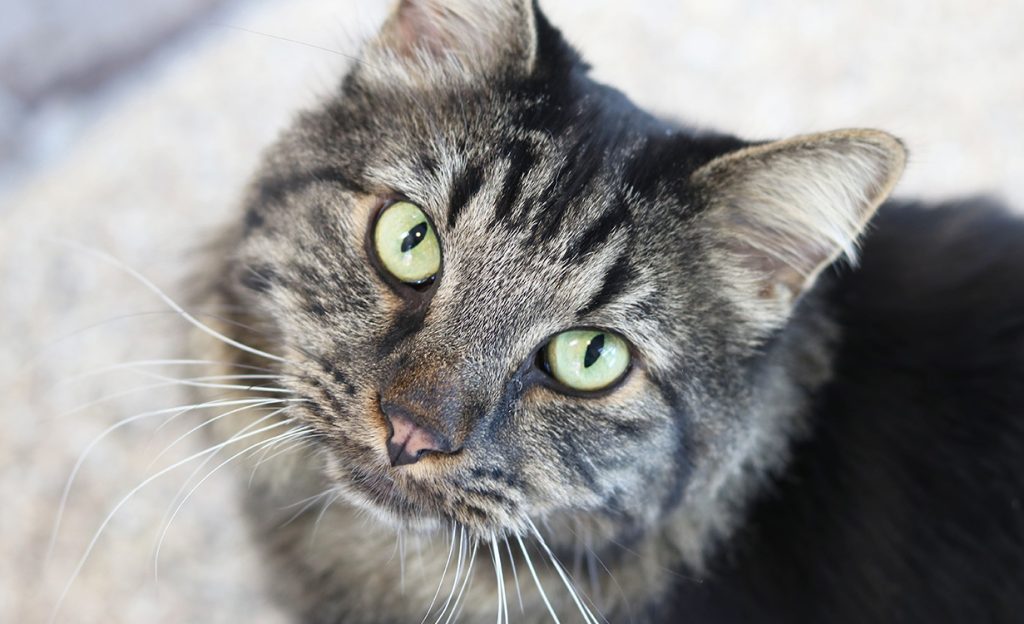Positive Reinforcement Techniques for Behavior Modification in Cats

Unlocking the Secrets to Your Cat’s Antics
Every cat owner can attest that our feline friends exhibit a mesmerizing variety of behaviors that can range from charming to perplexing. While some of these behaviors are endearing, others, like relentless scratching at your prized furniture or late-night yowling, can feel downright maddening. As many cat owners will agree, it’s not uncommon to seek effective solutions to enhance the living environment for both pets and their human companions. Merely applying punitive measures rarely yields lasting change; instead, have you ever considered how positive reinforcement techniques can redefine your interactions and transform your cat’s behavior?
Positive reinforcement focuses on encouraging desirable behaviors through rewards rather than administering punishment for undesirable actions. This method not only offers immediate benefits, such as reducing destructive behaviors but also fosters a loving and trusting relationship with your pet. The fundamental premise is to utilize treats, praise, or playtime when your cat displays positive behavior. Explore the following advantages:
- Enhanced Learning: Cats are highly intelligent and learn quickly when they associate good behavior with positive outcomes. For example, rewarding your cat with a treat when they use their scratching post can help redirect their natural instincts away from your sofa.
- Stronger Bonds: Reinforcing positive actions cultivates a more robust bond between you and your cat. Through this mutual understanding, cats often become more affectionate and responsive to your cues, leading to treasured moments of companionship.
- Reduced Stress: A positive training approach significantly lowers fear and anxiety in your cat. In contrast to punishment, which can create an environment of apprehension, positive reinforcement encourages an overall happier pet.
In Nigeria, where many households may face challenges such as limited space and increased urban noise, restless behaviors like clawing and incessant meowing can become particularly problematic. Addressing these behaviors through understanding rather than frustration allows for a more peaceful coexistence. By employing positive reinforcement, you can alleviate the stress of unwanted behaviors while ensuring a fulfilled and content feline family member.
As you embark on your journey into behavior modification, you will uncover practical strategies designed not only to meet your cat’s needs but also to enrich your mutual experiences. This approach encourages a deeper understanding of your pet’s instincts, which can provide clarity amid common behavioral issues. Get ready to unveil how small, thoughtful changes in your training strategies can yield significant, lasting improvements in your cat’s behavior, ultimately leading to a more joyful home. Remember, each reward you give builds a more profound trust and connection, making your life richer and your cat’s life happier.
SEE ALSO: Click here to read another article

Effective Strategies for Encouraging Positive Behavior
When it comes to influencing your cat’s behavior, the key lies in understanding positive reinforcement techniques. These techniques capitalize on your pet’s natural instincts and intelligence, allowing for a holistic approach to behavior modification. By focusing on rewarding desirable actions, you create a more harmonious relationship with your feline companion, paving the way for effective communication.
Understanding your cat’s motives is crucial in implementing positive reinforcement. Cats exhibit specific behaviors driven by instincts such as hunting, marking territory, or seeking attention. By recognizing these motivations, you can direct your cat’s actions towards desirable outcomes. Here are some key techniques to consider:
- Treat-based Rewards: Using treats is a classic form of positive reinforcement that has stood the test of time. When your cat performs a desirable behavior, such as using a litter box or engaging with a toy, reward them with their favorite snack. This can be especially effective with cats in Nigerian households, where certain local treats or snacks can enhance the connection between you and your pet.
- Verbal Praise: Alongside treats, sincere verbal praise plays a significant role in encouraging positive behavior. Using an enthusiastic tone when your cat does something commendable reinforces the behavior without relying on tangible rewards. Phrases like “good kitty” or “well done” accompanied by a gentle stroke can strengthen their desire to repeat that behavior.
- Interactive Playtime: Many cats have an innate desire to play, and turning playtime into a reward for good behavior is an excellent strategy. For example, if your cat refrains from scratching the furniture, you can reward them by engaging in a fun game with their favorite toy. This not only reinforces the behavior but also promotes physical and mental stimulation, crucial for your cat’s well-being.
- Clicker Training: Clicker training is a popular method for many animal trainers, including those focused on cats. This technique involves a small clicking device to mark desired behaviors promptly. When your cat hears the click, they associate it with a reward. This immediate feedback can be especially helpful in reinforcing actions like sitting, staying, or learning new tricks.
When implementing these techniques, consistency is vital. Any positive reinforcement strategy will only be effective if applied regularly. Establishing a routine makes it easier for your cat to understand what behaviors are expected and what rewards they can anticipate. Moreover, patience plays a crucial role; behavior modification takes time, and your efforts will be rewarded as your cat learns the connection between good behavior and positive outcomes.
As you delve deeper into the world of positive reinforcement techniques, it’s essential to remain observant and attentive to your cat’s responses. Each cat is unique, and what works for one may not work for another. By tailoring your approach and experimenting with various methods, you can find the perfect balance that enhances your cat’s behavior while nurturing a strong bond between you both.
| Advantage | Description |
|---|---|
| Builds Trust | Positive reinforcement fosters a confident and trusting relationship between the cat and its owner. |
| Encourages Desired Behaviors | By rewarding specific behaviors, cats are likely to repeat these actions, leading to successful training outcomes. |
Incorporating positive reinforcement techniques into cat training not only modifies behavior effectively but also enhances the emotional bond shared between pets and their owners. It’s important to recognize that consistent rewards, such as treats, praise, or interactive play, play a crucial role in reinforcing good behavior. As a bonus, this method reduces the occurrence of negative behaviors that often stem from fear or anxiety. Furthermore, studies show that cats trained with positive reinforcement are generally happier and exhibit fewer stress-related behaviors. This method capitalizes on a cat’s natural instincts and encourages them to express desirable traits without the use of harsh methods or punishment. As feline behaviorists recommend, immediate reinforcement after the desired action is key – be it a purr, a playful leap, or a scratch on a post instead of furniture. By understanding these fundamental principles, cat owners can embark on a journey towards a more harmonious household where furry companions thrive emotionally and behaviorally.
YOU MAY ALSO LIKE: Read read another article
Building Trust and Reducing Anxiety Through Positive Reinforcement
In addition to encouraging specific behaviors, positive reinforcement techniques can play a vital role in building trust and reducing anxiety in your cat. For many feline companions, particularly those that may have experienced past trauma, the right approach can lead to significant improvements in their overall demeanor. Here are several strategies that focus on establishing a trusting relationship while also addressing anxiety-related behaviors:
- Calming Environments: Creating a calming space for your cat is essential. Make use of soft bedding, hidden corners, and familiar scents to provide a safe haven. When they explore or settle down in these areas, reward them with treats or gentle praise. This method helps them associate the environment with positive experiences, reducing their anxiety over time.
- Gradual Desensitization: For cats that exhibit fear-related behaviors, such as hiding or aggression in response to loud noises or unfamiliar visitors, gradual desensitization combined with positive reinforcement can be beneficial. Start by exposing your cat to a low level of the triggering stimulus, rewarding them with treats or play when they remain calm. Incrementally increase exposure, always rewarding for calm behavior, until they feel more comfortable.
- Rewarding Calmness: When your cat is calm in situations where they would typically react negatively, make it a point to acknowledge this with treats and praise. For instance, if your cat typically panics during thunderstorms, rewarding them for relaxing in their favorite spot during a storm could help them associate the noise with a more positive outcome.
- Training Sessions: Short and engaging training sessions can be a great way to build positive associations. Focus on simple commands like “sit” and “come,” utilizing treats as rewards. Not only does this reinforce good behavior, but it also stimulates your cat mentally, thus reducing anxiety levels. Take advantage of training techniques that resonate with your pet’s personality, noting that even 5-10 minutes a day can strengthen your bond.
As you embark on your positive reinforcement journey, it is vital to consistently monitor your cat’s progress. Keep a journal of behaviors to track improvements over time, noting any changes in their reactions to stimuli or adjustments in their everyday behavior. This documentation can help you identify which positive reinforcement techniques are most effective for your cat.
As one of the unique aspects of feline behavior includes their varied responses to human actions, tailoring your reinforcement methods according to your cat’s personality traits is an essential consideration. For example, some cats may respond well to treats, while others could favor playtime or even gentle grooming as a reward. Understanding and adapting your approach can yield profound breakthroughs in behavior modification.
Moreover, local insights can offer a great advantage. Engaging with your community or local veterinarians can provide additional customized techniques that resonate with the cultural norms in Nigeria. Cats are social animals, and often, learning from others’ experiences can illuminate effective strategies you might not have considered.
In essence, positive reinforcement showcases a proactive way to not only modify behavior but also to enrich the quality of life for your cat. By investing the time and care needed to understand and respond to your pet’s unique needs, you will create a space where trust flourishes, and anxiety begins to dissipate, resulting in a healthier, happier feline companion.
YOU MAY ALSO LIKE: Read read another article
Conclusion: Embracing Positive Reinforcement for Happier Cats
In summary, positive reinforcement techniques represent a compassionate and effective approach to behavior modification in cats. By recognizing and rewarding desired behaviors, cat owners can create a harmonious environment that nurtures trust, reduces anxiety, and enhances the bond between feline companions and their humans. Through methods such as establishing calming environments, gradual desensitization to stimuli, rewarding calmness, and engaging in short training sessions, pet parents can witness remarkable transformations in their cats’ behavior.
Moreover, as discussed, understanding your cat’s unique personality plays a critical role in tailoring these techniques effectively. Each feline is distinct; therefore, experimenting with various forms of rewards, whether it be a favorite treat, interactive play, or soothing affection, aligns closely with their preferences. Taking the time to observe and adjust your tactics can unlock profound insights into their emotional landscape.
It’s also important to consider the resources available within the local community, including veterinarians and fellow cat enthusiasts in Nigeria. Sharing experiences and strategies can broaden your perspective and introduce innovative solutions that have worked for others, ultimately benefiting your beloved pet.
As you delve into the journey of positive reinforcement, remember that consistency, patience, and love are key ingredients in fostering a positive change. With dedication and care, you’re not just improving behavior—you’re enriching your cat’s life and paving the way for a deeper, more rewarding companionship. As the saying goes, happy cats make for happy homes, and through positive reinforcement, you can help your feline friend thrive.



